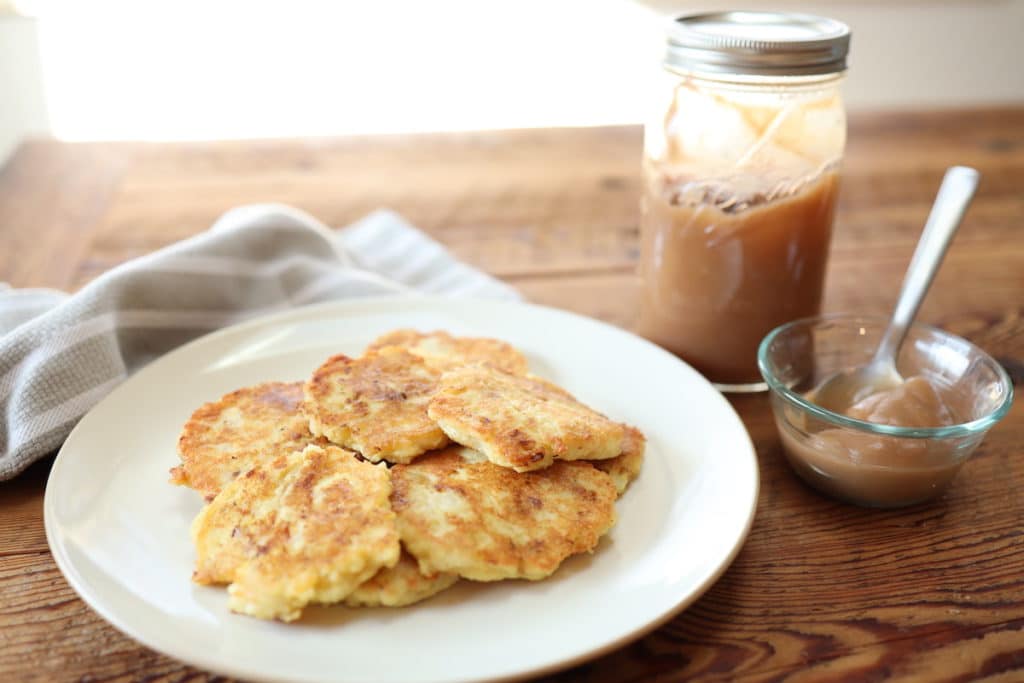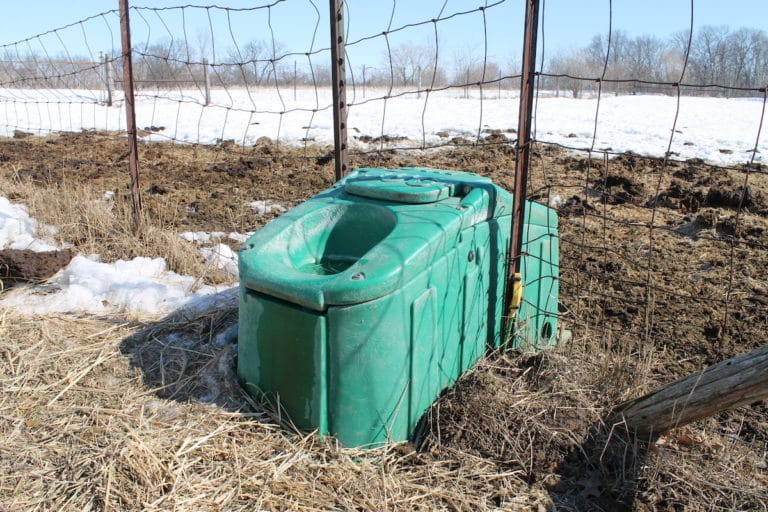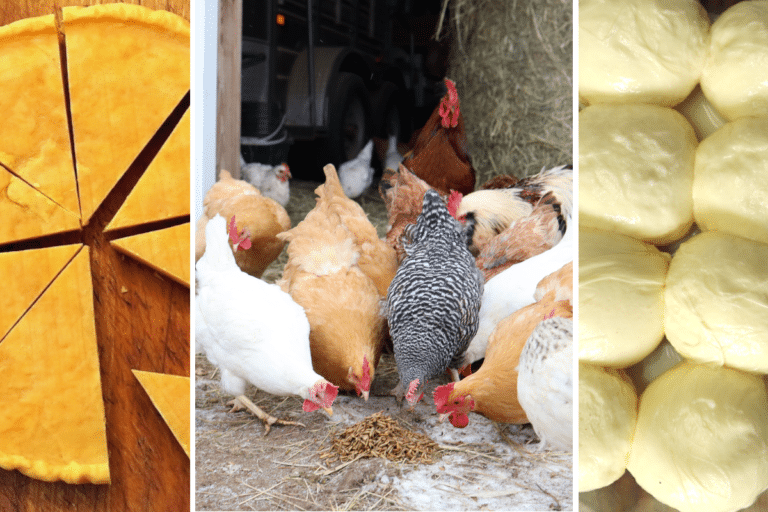How To Use Soft Potatoes From The Garden + Recipes!
You’ve grown or bought potatoes, stored them, and now they’ve turned soft—maybe even shriveled. Let’s look at the why of soft potatoes, how to use them, and some easy recipes!
Garden Potatoes Vs. Store Bought Potatoes
Potatoes have quickly become one of our favorite storage crops to grow.
Where store bought potatoes can last weeks when stored, potatoes from your garden can easily last months!
Washing—or not washing—your spuds is the key to their longevity! Any potato you buy from the store comes washed. This reduces their shelf life.

But dig up those potatoes, knock some loose soil off, and put them in a cool and dark place and your unwashed potatoes can last long into the winter months. Even up to next years harvest!
Growing your own potatoes also allows you to choose specific potato varieties that are optimized for storage. Like the Elba—our favorite storage potato—which stays firm months longer than other varieties we grow.
For more on potato storage and how we store potatoes in our basement, check out our post—How To Store Potatoes From The Garden Long Term—or the video below gives a tour of our storage system.
But the reality is that all potatoes go soft over time. Let’s look at why.
What Makes a Soft Potato Soft?
A soft potato is a dehydrated potato.
Potatoes are made up of 80% water. The other 20% is the energy, or nutrients, a potato needs to replenish itself.
Eventually, a stored potato will start the propagation process and begin to deplete those nutrient and water stores. As a result, the potato will turn soft, shrink in size and weight, and eventually shrivel.
Those stores of nutrients and water are converted into sprouts (or shoots). These sprouts go on to become a new potato plant that will grow leaves above ground and a network of roots and tubers (or more potatoes) below ground.

Sprouts grow out of the eyes of the potato—the natural bumps and dents on the outside skin of the potato.
Most stored potatoes will turn soft on a uniform timeline. However, some may turn soft prematurely due to being damaged, diseased, or infested.
Potatoes are obviously best to eat when firm and fresh before sprouts have begun to form. But are sprouted potatoes safe to eat?
Can You Eat Potatoes That Are Soft?
Soft potatoes that have sprouted are generally safe to eat. But you should know two things:
1. There’s an increased chance of toxicity.
2. They’ll have less nutrients and moisture.
To address the first point, potatoes contain both solanine and chaconine—naturally occurring glycoalkaloid compounds. They’re not harmful when consumed in small amounts and can in fact have positive health benefits.
The issues come when glycoalkaloids are consumed in excess where they can become toxic within the body.
The reality is that glycoalkaloids are mostly concentrated in the leaves, flowers, eyes, and sprouts—not in the tubers themselves.
So, be sure to remove those sprouts prior to cooking your potatoes and you’ll drastically lower the chance of exposure to toxic amounts of glycoalkaloids.

In regard to loss of nutrients and moisture, this is just the reality of potatoes that have gone soft due to sprouting.
Yes, you forego the peak nutrition of a firm, fresh potato. And you might have to cook them differently (recipes below). But potatoes will remain an edible and viable source of food long after they have started sprouting.
Prior to grocery stores and a globalized food system, people would have made-do with last years harvest of potatoes in whatever state they were in—as long as they were edible. This is seasonal eating that our ancestors practiced for millennia.
Other sources will disagree and say to discard sprouted potatoes. There are risks and things to avoid that you should educate yourself on. But in a country where its normal to waste 40% of all food that is produced, we like to reconsider.
Let’s look at what to avoid when it comes to soft potatoes.

When Not To Eat Potatoes
Our family has not bought potatoes from the store in years. Instead, we grow 500+ pounds of potatoes each year, harvest them, store them, and eat them all the way up until we’re pulling next years crop out of the ground.
Those homegrown, crisp, moist potatoes taste phenomenal through the winter months. Come spring, you begin to notice the dryness of a dehydrated potato that has sprouted. By summer you’re sifting through your shriveling potato stash eating what’s edible and sending what’s not to the compost heap—while dreaming of digging up the first potatoes from this years crop.
Eating potatoes from the garden year round, we’ve seen every type of potato there is to see. Here’s what we look to avoid when selecting from stored potatoes:
Green Potatoes
Green potatoes are toxic. This is usually a result of too much sun or light exposure creating a buildup of excess levels of solanine within the the potato. Sometimes the green section of the potato can be cut off and the rest of the potato is still good for consumption. But if the remaining potato has any hint of green or bitterness, the whole potato should go to the compost.

Rotten Potatoes
There’s a difference between a soft potato and a mushy potato. Mushiness is a sign of spoilage, along with the potato smelling musty or moldy. Visible signs of mold or discoloration are also signs of a rotten potato. These potatoes should be composted and not eaten.
When Sprouts Are Too Long
Your own judgement and comfort level are your best guides when sprouts start growing long. If no signs of turning green, rotten, or bitter are observed, the potato is likely still edible. However, is it still palatable? This is a question for you and your family to decide when it’s time to pull the plug on your remaining potato stash.

Suspect Potatoes
Does this smell off? Is that a bug living in there? It’s green… but not too green. If a potato at all causes you to pause and wonder if it’s safe for you and your loved ones to consume, you can feel free to compost it. It’s not worth risking your health over. That’s part of why we grow more potatoes than we actually need in a year—so we don’t feel bad when some don’t make the cut here and there.
When You Experience Side-effects
The reality is that everyone has a different sensitivity level to soft potatoes. Some may experience upset stomach and nausea at the slightest amount of excess solanine and chaconine. Others can tolerate it with no side-effects. When potatoes have sprouted and turned soft, it’s best to sample them in smaller amounts to see how your body responds before consuming larger quantities.
5 Uses For Soft Potatoes
A soft potato is still a potato. So let’s look at 5 ways to put them to use!
1. Eat Them
As discussed above, soft potatoes can still be perfectly safe to eat! We’ve enjoyed many a delicious potato dish from soft potatoes that others would have written off as “bad.” Know the risks and what to look out for, and put those perfectly edible potatoes to use!
2. Plant Them
Sprouted potatoes are perfect for setting aside for next years seed potatoes! Keep the sprouts on them and plant them in the spring. We had a great potato yield this past season from planting potatoes with sprouts over 2 ft. Long!

3. Feed Them to Animals
If you’re not feeling comfortable with feeding your soft potatoes to your family but there’s no visible signs they’ve turned green or rotten, they can still make a yummy treat for animals! Pigs and goats are both great candidates for soft potatoes. Find a farm and ask if they’re OK with your past-prime potato stockpile being given a second life as animal feed.
4. Give Them Away
Sometimes the best thing to do with soft potatoes is to not let them get soft in the first place! If you know your potatoes are going to sprout soon but you’ve got more than enough for your family’s needs, find outlets to reduce your supply before they’re past your liking. Give them to neighbors or family. Barter for other farm products. Sell them. Or drop some off at your local food pantry.
5. Compost Them
To jump on my soapbox for a minute, I find it completely nonsensical that composting is banned in some areas. It makes more sense to me that not composting would be illegal. Every home should develop a system for composting their food scraps and yard waste. Instead of calling a potato (or any food) “bad” and discarding it, we can give it a second life by letting it break down naturally in the compost pile and go on to replenish our soils and gardens.

Easy Potato Dishes for Soft Potatoes
A soft potato is, well, soft. The texture has changed. They have lost moisture and perhaps even taste.
Therefore, we prefer to cook soft potatoes in ways that add moisture back into the potatoes.
Adding liquid like milk, broth, cream, or butter when cooking soft potatoes is preferred. Or, we’ve also had success cooking them in dishes where liquids can be absorbed.

Baking or roasting a soft, dehydrated potato might not be its best use. However, if you adjust your expectations for the end result being a bit dryer, we’ve still baked or roasted potatoes that were plenty soft.
Here are some soft potato recipe ideas:
Mashed Potatoes/Potato Pancakes
Boiling potatoes then mashing them is one of the top ways to bring those dry, soft potatoes back to life! And whenever our family has mashed potatoes, everyone is asking for them to be turned into these gluten free potato pancakes (or latkes)!
To mash your soft potatoes, start by…
If your mashed potatoes are on the dry side, rehydrate them by adding milk, broth, butter, whey, or cream to reach your desired consistency and texture.
Then, take it a step further to make them even more delicious with this potato pancake recipe!

Potato Crusted quiche
With bins of potatoes stored up in the basement, we like to get creative with how we use them. Often that looks like swapping them into recipes wherever we can. Which is exactly how this potato crusted quiche was born!
Yes, a standard quiche crust is crumbly and delicious. But whipping one up from scratch adds a lot of times and steps.
Instead, slice up some of those soft potatoes you’re looking to unload, build your quiche on top of them, pop it in the oven, and you’ve got a nourishing and tasty meal on the table in no time!

Roasted Potatoes
If a soft potato is too dried out, roasting them might not be the most appetizing. But we’ve roasted potatoes that were pretty soft and sprouted and still found them plenty delicious!
The key is adding enough fat to the pan you’re roasting them in. We like to roast potatoes in lard or butter. Add an extra tablespoon or two more than normal and let those dry spuds soak in as much of those flavorful, healthy fats as they can.
Our favorite way to roast potatoes is to cube or cut them into fries and roast them at 425°F Fahrenheit with plenty of fat for 25-35 minutes in a single layer.
Learn more on how to use your garden harvest year-round:
- How To Store Potatoes From The Garden Long Term
- Planting, Harvesting, and Curing Garlic for Storage – It’s Easy!
- Shelling Corn By Hand (2 Simple Methods)
Pin it for later!








I bought 50# of potatoes from Azure and they went “bad” sooo fast. I plan to plant the sprouts when we move. Thanks for this article! I found it so helpful and love the neediness of the science behind the potato stuff.
Bummer they turned so quickly but glad to hear you plan to plant them! Glad it was helpful and thanks for stopping by!